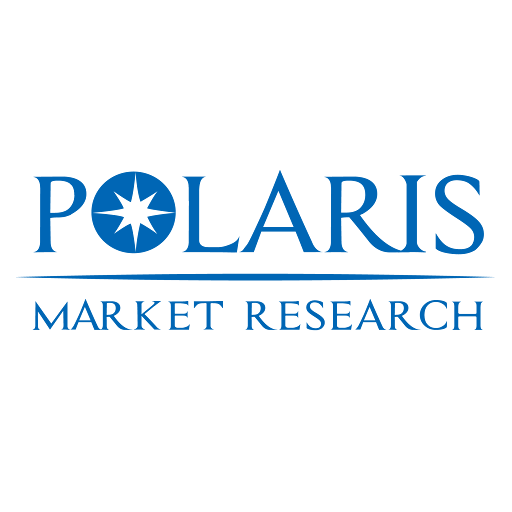Emerging Economies in Asia-Pacific Accelerate Growth of the Nuclear Medicine Market Through Government Healthcare Modernization Programs

The global nuclear medicine market size was valued at USD 6.19 billion in 2020 and is anticipated to grow at a CAGR of 9.0% during the forecast period, driven by rising cancer incidence, aging populations, and expanding diagnostic and therapeutic applications of radiopharmaceuticals. Unlike conventional imaging modalities, nuclear medicine offers functional and molecular-level insights, enabling early detection of diseases such as neuroendocrine tumors, prostate cancer, and Alzheimer’s through techniques like PET and SPECT. This clinical advantage has cemented its role in precision medicine, though market expansion remains tightly coupled to regional healthcare infrastructure, isotope supply chains, and regulatory frameworks governing radioactive materials.
North America, particularly the United States, commands the largest share of the global market, supported by advanced healthcare infrastructure, high reimbursement rates, and robust research funding. According to the U.S. Centers for Medicare & Medicaid Services (CMS), over 20 million nuclear medicine procedures are performed annually in the U.S., with PET scans accounting for a growing proportion due to the adoption of theranostics—combining diagnostics and targeted radionuclide therapy. The Food and Drug Administration (FDA) has accelerated approvals for novel radiopharmaceuticals, including Lutathera® and Pluvicto™, reinforcing the U.S. as a hub for innovation. However, challenges persist: the aging domestic molybdenum-99 (Mo-99) production infrastructure and reliance on foreign isotope suppliers create vulnerability, prompting initiatives like the American Medical Isotopes Production Act to incentivize non-uranium-based Mo-99 production. Canada complements this ecosystem through its National Research Universal reactor and strong academic-clinical networks, though recent reactor outages have underscored systemic fragility.
Europe maintains a strong but heterogeneous market landscape. Germany, France, and the UK lead in clinical adoption, supported by universal healthcare systems that cover nuclear medicine procedures. Eurostat data indicates that over 85% of EU member states operate at least one cyclotron, enabling local production of short-lived isotopes like fluorine-18. The European Medicines Agency (EMA) has established clear pathways for radiopharmaceutical approval, facilitating cross-border access. However, regulatory fragmentation remains an obstacle: national radiation safety authorities impose varying transport and handling rules, complicating pan-European distribution. The European Commission’s 2021 Pharmaceutical Strategy emphasizes securing critical medicine supply chains, including radioisotopes, which has spurred investments in decentralized production models. Notably, the Netherlands and Belgium serve as key isotope export hubs, leveraging high-flux reactors like BR2 and HFR, though the planned 2026 shutdown of the HFR reactor in Petten poses a near-term supply risk that regional stakeholders are actively mitigating through alternative production methods.
The Asia Pacific region is emerging as the fastest-growing market, fueled by rising cancer burdens, government healthcare investments, and expanding diagnostic capacity. Japan’s Ministry of Health, Labour and Welfare reports a 12% annual increase in PET scan utilization since 2019, driven by national cancer screening programs and approval of Ga-68 PSMA for prostate cancer imaging. South Korea has integrated nuclear medicine into its National Cancer Control Plan, while China’s 14th Five-Year Plan prioritizes high-end medical equipment localization, including PET/CT scanners and radiopharmaceutical synthesis modules. India, though starting from a lower base, is scaling rapidly: the Department of Atomic Energy operates over 200 nuclear medicine centers under the BRIT and DAE network, and recent regulatory reforms now allow private hospitals to produce isotopes under AERB oversight. Despite this momentum, disparities persist—Southeast Asian and South Asian nations often lack cyclotron infrastructure, relying on imported doses with short half-lives, which limits access outside major urban centers.
Read More @ https://www.polarismarketresearch.com/industry-analysis/nuclear-medicine-market
Latin America and the Middle East & Africa remain underpenetrated but show pockets of progress. Brazil’s National Cancer Institute (INCA) has expanded radiopharmaceutical access through public health partnerships, while Mexico and Argentina operate research reactors capable of Mo-99 production. In the Gulf, Saudi Arabia’s Vision 2030 includes investments in nuclear medicine as part of its healthcare transformation program, with new PET centers opening in Riyadh and Jeddah. However, most African nations face critical shortages in both equipment and trained personnel, with the IAEA noting that fewer than 20 countries on the continent have functional cyclotrons. Global initiatives like the IAEA’s Rays of Hope campaign aim to address these gaps, but sustainable growth requires long-term human capital development and regulatory harmonization.
Key restraints include the short half-life of isotopes (posing logistical hurdles), high capital costs for imaging equipment, and stringent handling regulations that deter smaller facilities. Opportunities lie in alpha-emitter therapies, AI-enhanced image reconstruction, and point-of-care radiopharmaceutical dispensing systems. A defining trend is the convergence of theranostic agent development with precision oncology protocols, while radioisotope supply chain resilience, regulatory harmonization efforts, and cyclotron network expansion are shaping regional competitiveness. Simultaneously, radiopharmaceutical manufacturing innovation and nuclear medicine workforce training are critical enablers of equitable access.
- GE HealthCare
- Siemens Healthineers
- Curium Pharma
- Lantheus Holdings, Inc.
- Cardinal Health, Inc.
- Bayer AG
- Novartis AG
More Trending Latest Reports By Polaris Market Research:
Home Beer Brewing Machine Market
Home Beer Brewing Machine Market
Peripheral Artery Disease Market
Online Trading Platform Market
U.S. Medical Waste Container Market
- AI
- Vitamins
- Health
- Admin/office jobs
- News
- Art
- Causes
- Crafts
- Dance
- Drinks
- Film
- Fitness
- Food
- Giochi
- Gardening
- Health
- Home
- Literature
- Music
- Networking
- Altre informazioni
- Party
- Religion
- Shopping
- Sports
- Theater
- Wellness


